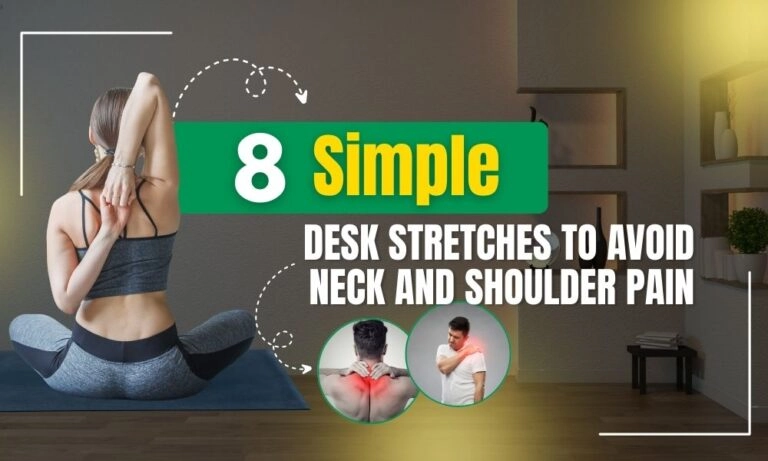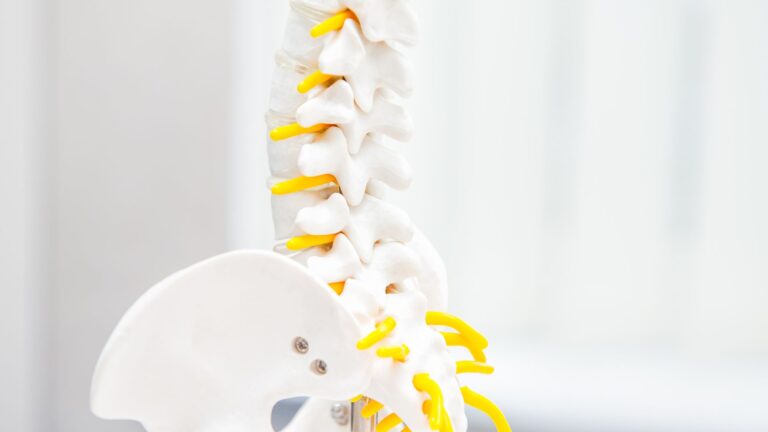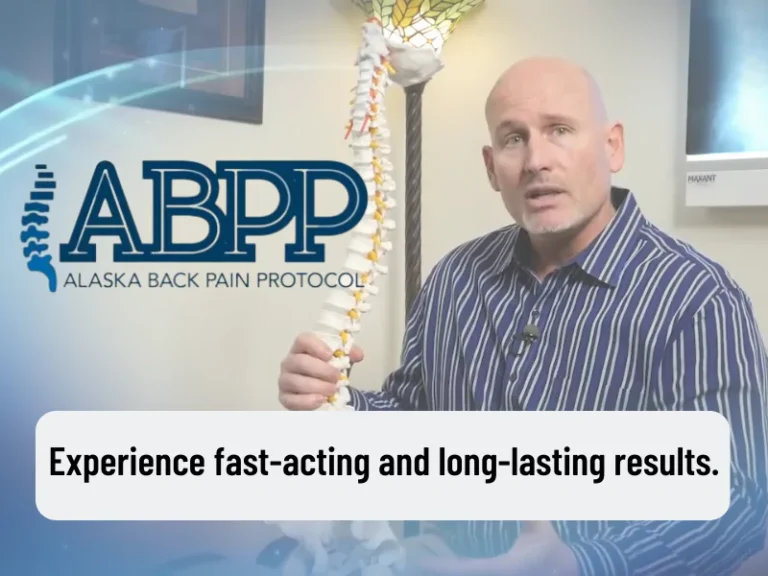Back pain is a common condition affecting numerous people in both Anchorage, Alaska and across the globe. Chiropractors are often contacted as the first medical care providers for spine-related issues.1
Chiropractic diagnosis usually hinges on first distinguishing between nonspecific mechanical back pain and other more serious pathologies like fracture, cancer, or other issues. The diagnosis involves a systematic step-by-step process that usually begins with:
- History-taking
- Physical examination
- And, if needed, imaging.
We have constructed this guide to help explain how Anchorage chiropractors identify the most frequent back pain types. It also provides multiple evidence-based diagnostic methods.
I. The Chiropractic Diagnostic Pathway

A. Comprehensive Patient History
The first step in rendering a diagnosis is the taking of the patient’s medical history. Here, in a face-to-face conversation, our Anchorage chiropractor will try to determine the duration of the condition, its onset time and nature (whether it is acute or chronic), pain distribution, and whether or not there are any aggravating or relieving factors (i.e. does it get worse or better at night, while sitting, etc…).
Reports of weight loss, night pain, fever, or any neurological deficits, are considered red flags that may indicate a more serious condition than normal. In cases involving serious issues like cancer, infection, or fracture, chiropractors can and will refer patients to other specialists accordingly.2
B. Physical Examination
After taking a history, a chiropractor will likely perform a physical examination. This involves several successive steps.
Inspection & Observation: At this point, the chiropractor studies the patient’s posture, gait (how they walk), and spinal alignment. His/her trained eye will note discrepancies and suggest a way forward to deal with them.
Palpation: Here, a chiropractor uses his/her hands to assess muscle tone and/or spinal facet tenderness.
Active & Passive ROM (Range of Motion) Tests: These are used to identify any deficits in the patient’s mobility.
Neurological Evaluation: Here the chiropractor will test the patient’s reflexes, perform sensory tests, and look for signs of radiculopathy (pain or other symptoms that radiate to other parts of the body) by doing a straight leg raise test.
Orthopedic Provocation Tests: These tests are used to differentiate between possible locations of the condition. Basically, these allow the chiropractor to determine if the issue is with a disc, a facet joint, or a sacroiliac joint.
Chiropractic-Specific Assessments: There are a number of techniques that are normally reserved for use in the chiropractic profession. These include: motion palpation, segmental stiffness, and joint play. They are used to assess musculoskeletal issues primarily in the spine like back pain.
C. Red Flag Protocol
Chiropractic care is usually one of the first measures used in the fight against back pain. The medical community recommends conservative management like chiropractic as the first course to take unless the resulting exam or history suggests serious systematic disease.3
In certain rare cases, (e.g. lumbosacral chordoma or metastatic cancer) a serious condition may mimic a far less serious one like mere mechanical back pain. A case study on PubMed discusses the misdiagnosis of a 69-year old man that led to his death.4
Clearly, the importance of a correct diagnosis is paramount. To that end, imaging is an essential tool should suspicions arise.
D. Imaging & Tests
Generally, imaging should not be considered routine for nonspecific back pain. It should be reserved for those cases where red flags are present. MRIs, CTs, and/or x-rays can be used to rule out malignancy, stenosis, and fractures. But they should only be used when necessary.
II. Most Common Back Pain Conditions Diagnosed by Chiropractors

Now that we’ve looked at the diagnostic procedure, let’s take a closer look at some of the conditions chiropractors may contend with.
A. Nonspecific Mechanical Low Back Pain
The first sign of this condition is a diffuse feeling of lower back discomfort that is often aggravated by posture and/or certain activities. It is usually positively diagnosed based on impairment of movement, tenderness in the back, and segmental dysfunction (a part of the spine is not moving the way it should).
Fortunately, chiropractic care is a highly effective means of dealing with this type of condition, as a study from Research Gate indicates.5
In Anchorage, Alaska and elsewhere this type of care can be found at private chiropractic offices or physical therapy clinics.
B. Lumbar Disc Herniation with Radiculopathy
Another common source of back pain is a lumbar disc herniation combined with radiculopathy. This condition is indicated by the presence of both back and leg pain, as well as a positive result from the straight leg raise test. Further, there will be indications in the dermatomal pattern – that is, the specific section of skin that the radiating nerve conducts its symptoms to.
This condition is typically diagnosed with a neurological exam combined with the use of imaging technologies.
C. Spinal Stenosis
Another condition of concern is spinal stenosis. This is a narrowing of the spinal canal to the point where the spinal cord may be compressed. It is indicated by neurogenic claudication – a term indicating weakness or pain in the leg, particularly when standing or walking, and which improves when sitting.
Diagnosing this condition usually requires an examination combined with imaging to confirm the narrowing of the spinal canal. As usual, conservative care like chiropractic care, provides the first line of defense against this disease. Flexion-distraction techniques are often used by chiropractors here.
This type of treatment can be found at chiropractic spine rehab centers.
D. Sacroiliac (SI) Joint Dysfunction
Another condition chiropractors often deal with is sacroiliac (SI) joint dysfunction. Signs of this condition include unilateral posterior pelvic pain that is worsened by standing, as well as a positive SI stress test. An SI stress test consists of a series of tests that apply specific stresses to the SI joint. Properly done, it can help locate the region of concern in the SI joint and gain a better understanding of the problem.
Chiropractors will usually employ chiropractic manipulation and/or targeted mobilization techniques to treat the condition. In Anchorage, AK, such care is usually available in chiropractic clinics and sports injury centers.
E. Serious Pathologies (Fracture, Cancer, Infection)
In addition to the conditions discussed above, there are a number of serious pathologies that chiropractors always keep an eye out for. These include fractures, cancers, and infections. These can lead to serious disability or even death, if not managed appropriately.
The signs of these conditions include persistent pain and other red flags. When a chiropractor detects one of these, he/she will urgently order imaging to be done to confirm the presence of the condition. If imaging confirms his/her suspicions, the patient will be referred to another specialist.
As noted in the study mentioned above on PubMed that discusses the misdiagnosis of a 69-year old man that ultimately led to his death, getting the right diagnosis in a timely manner is critical.6 And this can be very difficult in cases where serious conditions like lumbosacral chordoma or metastatic cancer mimic a far less dangerous one like mere mechanical back pain.
Regardless, if such serious conditions are present, the appropriate care should be sought through hospital systems and multidisciplinary referrals.
III. Diagnostic Tools & Decision Aids
In the pursuit to provide better care, chiropractors have developed a number of decision aids to unify treatment standards and provide step-by-step processes to aid both the chiropractor doing the diagnosis, and the patient being diagnosed.
As discussed in this Palmer case study,7 one of the objectives of using a clinical decision aid is to educate patients in multi-modal care and to empower those patients and improve their treatment outcomes.
Another objective of such aids is to standardize terminology to ensure clarity for patients and medical staff alike.
IV. Chiropractic Interventions Based on Diagnosis

The first rule of medical care is to try conservative, non-invasive measures first. One such measure is chiropractic care. Of course, the treatment chiropractic care uses will vary with diagnosis. Here is a brief break-down of diagnoses and the interventions each one calls for:
- Mechanical Pain: a combination of spinal manipulative therapy, multimodal adjustments, and exercise.
- Disc Herniations: flexion-distraction techniques, and traction where appropriate
- Stenosis: Gentle mobilization and flexion-distraction
- SI Dysfunction: High-velocity low-amplitude (HVLA) manipulation targeted at the SI (Sacroiliac) joint.
V. Where Patients Can Seek Chiropractic Diagnosis

Here is a small chart depicting where a patient can seek the most appropriate care for their diagnosis.
| Condition | Best Care Settings |
| Mechanical back pain | Private chiropractic or spine rehab clinics |
| Herniated disc with radiculopathy | Chiropractic + integrative spine care |
| Spinal stenosis | Chiropractic centers specializing in flexion-distraction therapy |
| SI joint dysfunction | Sports-focused chiropractic clinics |
| Suspected red flag condition | Chiropractic with referral networks + imaging access |
Conclusion
In the end, chiropractors employ a methodical diagnostic approach. One that takes into account the patient’s history, performs an initial exam, and takes heed of a variety of red-flag warnings. It is backed by evidence-based scientific guidelines.
With the techniques at their disposal, chiropractors are equipped to identify and treat many kinds of back pain whether it be mechanical, discogenic, or something else. Of course, in some serious red-flag situations, chiropractors can and do refer to other specialists.
All told, multidisciplinary collaboration combined with appropriate referrals maximizes safe and effective outcomes. Here, at Better Health Alaska in Anchorage, chiropractor Dr. Brent Wells and his team have been dealing with back pain issues in patients for nearly three decades. So, reach out and make an appointment. If you are suffering from back issues (or other musculoskeletal problems), we can help.
Sources and Studies
- Trager, R, D.C., “Is Chiropractic Treatment Right for Your Back Pain?” University Hospitals, 2025,
https://www.uhhospitals.org/blog/articles/2025/06/is-chiropractic-treatment-right-for-your-back-pain?utm_source=chatgpt.com - Casazza, B.A. MD, “Diagnosis and Treatment of Acute Low Back Pain,” American Family Physician, 2012;85(4):343-350
https://www.aafp.org/pubs/afp/issues/2012/0215/p343.html?utm_source=chatgpt.com - Gevers-Montoro C, Provencher B, Descarreaux M, Ortega de Mues A, Piché M. Clinical Effectiveness and Efficacy of Chiropractic Spinal Manipulation for Spine Pain. Front Pain Res (Lausanne). 2021 Oct 25;2:765921.
https://pmc.ncbi.nlm.nih.gov/articles/PMC8915715/?utm_source=chatgpt.com#s7 - Williams SP, Beckerman B, Piña Fonti ME. A 69-year-old presenting with musculoskeletal low back pain: a case of lumbosacral chordoma. J Chiropr Med. 2014 Jun;13(2):144-8.
https://pmc.ncbi.nlm.nih.gov/articles/PMC4322016/?utm_source=chatgpt.com - Wong, E. et al., “Comparison of Effectiveness of Chiropractic Spinal Manipulation and Conservative Therapy for Low Back Pain,” Orthopaedic Journal of Sports Medicine, 05(01) (2022)
https://www.researchgate.net/publication/367029946_Comparison_of_Effectiveness_of_Chiropractic_Spinal_Manipulation_and_Conservative_Therapy_for_Low_Back_Pain - Williams,”A 69-year-old presenting…” 144-8
https://pmc.ncbi.nlm.nih.gov/articles/PMC4322016/?utm_source=chatgpt.com - Tisinger, S., “Developement of a Clinical Decision Aide for Chiropractic Management of Common Conditions Causing Low Back Pain,” Palmer, College of Chiropractic, Sep. 11, 2023
https://www.palmer.edu/palmer-blog/development-of-a-clinical-decision-aid-for-chiropractic-management-of-common-conditions-causing-low-back-pain-in-veterans/?utm_source=chatgpt.com










